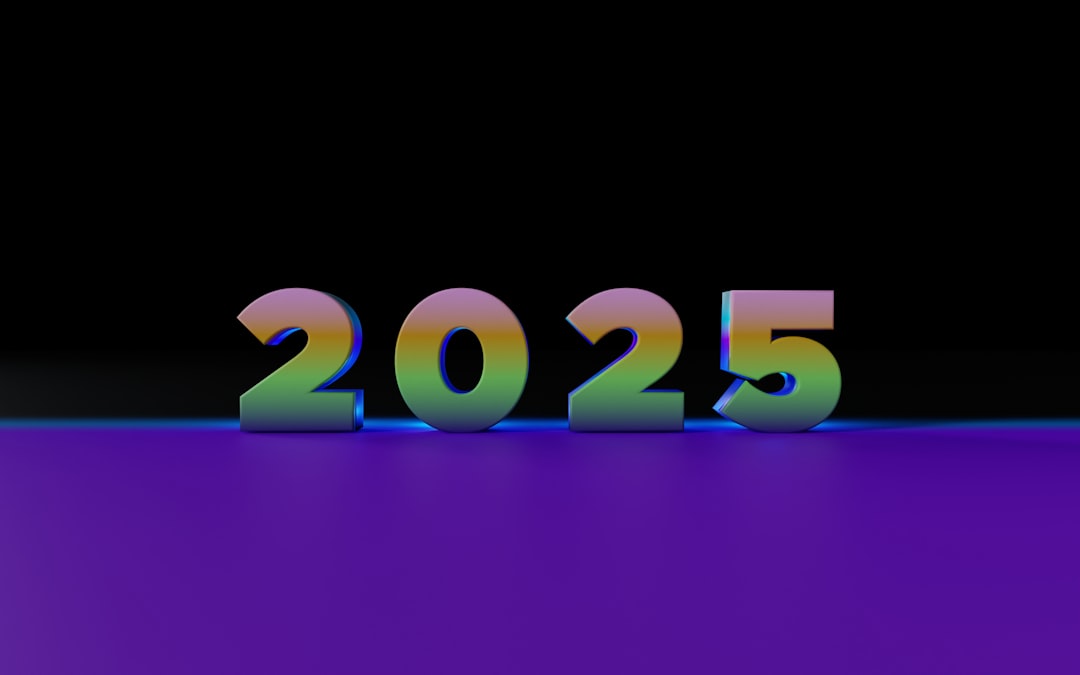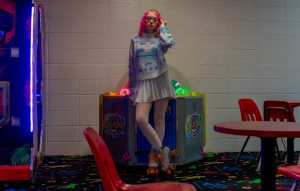Emerging Pop Culture Trends Hinting at the Late 2020s
Discover the pop culture trends of July 2025 shaping the late 2020s. Dive in for a glimpse of the future’s cultural landscape!
Influencer-Led Fashion Trends: The rise of virtual influencers and AI-generated fashion icons is reshaping the way trends are set and followed in the fashion industry, hinting at a more digitally driven future in the late 2020s.
The Emergence of Virtual Influencers
In recent years, virtual influencers have become a significant force in the fashion industry. These digital personas, often created using advanced CGI and AI technologies, have amassed large followings on social media platforms.
Unlike human influencers, virtual influencers can be tailored to meet specific brand aesthetics and are available 24/7 to engage with audiences. This flexibility allows brands to craft highly controlled marketing campaigns, ensuring consistency and creativity without the limitations of human schedules or physical constraints.
AI-Generated Fashion Icons
AI-generated fashion icons are another groundbreaking development, utilizing machine learning algorithms to analyze vast amounts of fashion data and predict upcoming trends.
These AI models can create unique fashion pieces by synthesizing styles from different eras, cultures, and designers. As a result, they offer a fresh perspective on fashion design, often producing innovative and unexpected combinations that captivate fashion enthusiasts.
The use of AI in fashion design not only accelerates the trend-setting process but also democratizes fashion by making cutting-edge designs accessible to a broader audience.
Impact on Trend Setting and Following
The influence of virtual and AI-generated icons is reshaping how trends are set and followed. Traditional fashion cycles, once dictated by seasonal collections and runway shows, are now increasingly influenced by digital trends that can emerge and evolve in real-time.
Social media platforms are the new runways, where virtual influencers showcase the latest styles and AI-generated designs, reaching millions instantly. This shift is leading to a more dynamic and interactive fashion landscape, where trends are not just observed but actively participated in by global audiences.
A Glimpse into the Late 2020s
As we move towards the late 2020s, the fashion industry is poised for even greater digital integration.
The rise of virtual influencers and AI-driven fashion suggests a future where technology and creativity are seamlessly intertwined. This evolution hints at a fashion world that is more inclusive, innovative, and responsive to the changing preferences of consumers.
As digital tools continue to advance, they will likely play an even larger role in shaping the fashion narratives of tomorrow, offering a glimpse into a future where the boundaries between the virtual and physical realms are increasingly blurred.
Meta-Reality Entertainment: The growing popularity of immersive experiences like virtual concerts, metaverse gaming, and interactive storytelling blurs the lines between physical and digital realms, offering a glimpse into a future where entertainment becomes even more interactive and personalized.
Virtual Concerts: A New Frontier in Music
In 2025, virtual concerts have become a staple in the entertainment industry, offering fans unprecedented access to their favorite artists. Platforms like VRStage and MetaMelody have revolutionized the concert experience, allowing users to attend live performances from the comfort of their homes.
These virtual events not only replicate the energy of a live show but also enhance it with interactive elements such as customizable avatars and virtual meet-and-greets. This shift has democratized access to music, breaking geographical barriers and making concerts more inclusive.
Metaverse Gaming: Beyond Traditional Gameplay
Metaverse gaming has taken center stage in pop culture, offering players an immersive experience that extends beyond traditional gaming.
Games like “Elysium Realms” and “ChronoVerse” allow players to explore expansive digital worlds, interact with other gamers in real-time, and participate in dynamic storylines that evolve based on player choices. This level of interactivity and personalization has redefined what it means to be a gamer, as players can now forge their own paths and create unique narratives within these digital environments.
Interactive Storytelling: The Future of Narratives
Interactive storytelling has emerged as a powerful tool in the entertainment industry, merging elements of gaming, cinema, and literature.
Platforms like StoryScape and MetaTales offer users the ability to influence story outcomes through their decisions, creating a personalized narrative experience. This form of storytelling has captivated audiences by providing a sense of agency and involvement, allowing them to become co-creators in the stories they consume.
As technology advances, the lines between audience and creator continue to blur, paving the way for even more engaging and personalized content.
Blurring the Lines: The Integration of Physical and Digital Realms
The integration of physical and digital realms is becoming more seamless, as evidenced by the rise of augmented reality (AR) and mixed reality (MR) experiences. Events like the “MetaFest” showcase how these technologies can enhance real-world experiences by overlaying digital elements onto physical environments.
This fusion of realities offers a glimpse into a future where entertainment is not confined to a single medium but is a fluid experience that adapts to individual preferences and contexts.
Sustainability in Pop Culture: Increasing awareness and emphasis on sustainability in pop culture, from eco-friendly fashion choices to climate-conscious storytelling in movies and TV shows, suggest a shift towards a more environmentally conscious and socially responsible cultural landscape in the late 2020s.
Eco-Friendly Fashion Choices
In recent years, the fashion industry has seen a significant shift towards sustainability, with many designers and brands embracing eco-friendly practices. As of July 2025, pop culture icons are increasingly seen endorsing sustainable fashion, opting for clothing made from organic materials and recycled fabrics.
This trend is not only a response to consumer demand for more ethical products but also a reflection of a broader cultural movement towards environmental responsibility.
High-profile events like the Met Gala and the Oscars have become platforms for showcasing sustainable fashion, with celebrities donning outfits that highlight the importance of reducing waste and promoting ethical production. This visibility in pop culture is crucial in normalizing eco-conscious choices and inspiring fans to consider the environmental impact of their fashion decisions.
Climate-Conscious Storytelling in Movies and TV Shows
The entertainment industry is also playing a pivotal role in raising awareness about sustainability through climate-conscious storytelling.
Movies and TV shows are increasingly incorporating themes of environmental conservation and climate change, reflecting a growing recognition of these issues in mainstream media. As of mid-2025, productions like “The Green Horizon” and “Eco Warriors” have gained popularity for their engaging narratives that highlight the urgency of addressing climate change.
These stories often depict dystopian futures resulting from environmental neglect, serving as cautionary tales that resonate with audiences.
By weaving sustainability into their plots, filmmakers and showrunners are not only entertaining viewers but also educating them about the importance of preserving our planet for future generations.
A Shift Towards a More Environmentally Conscious Cultural Landscape
The increasing emphasis on sustainability in pop culture suggests a significant shift towards a more environmentally conscious and socially responsible cultural landscape as we approach the late 2020s. This shift is evident in the way sustainability is being integrated into various aspects of pop culture, from fashion and entertainment to music and art.
As sustainability becomes a central theme in pop culture, it is likely that we will continue to see a rise in initiatives and collaborations aimed at promoting environmental awareness.
This trend not only reflects a growing societal commitment to sustainability but also indicates a future where cultural expressions are closely aligned with ecological and social responsibility.
Anything in current pop culture as of now (July 2025.) that so far seems different from earlier that might be giving us a little hint/taste of what the late 2020s might be like?
Rise of AI-Generated Entertainment
In 2025, artificial intelligence has become a significant player in the entertainment industry. AI-generated music, films, and even virtual influencers are gaining popularity.
This trend suggests a future where AI could play a central role in creating and curating content, potentially reducing the time and cost associated with traditional production methods.
As AI technology continues to advance, we might see a shift towards more personalized entertainment experiences, where AI algorithms tailor content to individual preferences, creating a unique and immersive experience for each user.
Virtual Reality and Augmented Reality Integration
Virtual Reality (VR) and Augmented Reality (AR) technologies are becoming more mainstream in 2025, with advancements making them more accessible and affordable. These technologies are not only transforming gaming but also impacting other areas such as virtual concerts, interactive storytelling, and even social media platforms.
The late 2020s could see a world where VR and AR are seamlessly integrated into daily life, offering new ways to interact with digital content and each other.
This integration could redefine how we experience entertainment, education, and even work.
Sustainability and Eco-Consciousness in Fashion
Pop culture in 2025 is increasingly influenced by a strong emphasis on sustainability, particularly in the fashion industry. Brands are adopting eco-friendly practices, using recycled materials, and promoting slow fashion to reduce environmental impact.
This shift reflects a broader societal trend towards environmental consciousness.
As we move towards the late 2020s, this focus on sustainability is likely to intensify, influencing not just fashion but other industries as well. Consumers may demand more transparency and accountability from brands, leading to innovative practices and products that prioritize the planet.
Decentralized Social Media Platforms
In 2025, there is a growing interest in decentralized social media platforms that prioritize user privacy and data security.
These platforms offer an alternative to traditional social media giants, allowing users more control over their content and personal information.
This trend hints at a future where digital privacy becomes a key concern for users, potentially leading to a shift in how social media operates. The late 2020s might see a more fragmented social media landscape, with users gravitating towards platforms that align with their values and privacy preferences.
FAQ
Q: How has the rise of virtual reality concerts changed the music industry in 2025?
A: In 2025, virtual reality (VR) concerts have become a staple in the music industry, offering fans immersive experiences that were previously unimaginable. Artists are leveraging VR technology to create interactive and visually stunning performances that can be accessed globally. This shift has democratized live music, allowing fans from all over the world to attend concerts without the constraints of geography or venue capacity. The trend hints at a future where digital experiences become increasingly integrated into entertainment, potentially reducing the environmental impact of traditional tours and expanding the creative possibilities for artists.
Q: What role are AI-generated influencers playing in the current pop culture landscape?
A: AI-generated influencers have gained significant traction in 2025, becoming prominent figures in pop culture. These digital personas, created using advanced artificial intelligence, are engaging audiences on social media platforms with content that rivals human influencers. They offer brands new opportunities for marketing, as AI influencers can be tailored to fit specific demographics and interests. This trend suggests a future where the lines between human and digital personalities blur, raising questions about authenticity and the impact on human influencers in the late 2020s.
Q: How is the fashion industry adapting to sustainability demands in 2025?
A: In 2025, the fashion industry is increasingly embracing sustainability, driven by consumer demand and environmental concerns. Brands are adopting circular fashion models, utilizing recycled materials, and implementing transparent supply chains to reduce their ecological footprint. Innovations such as biodegradable fabrics and digital fashion—where consumers purchase virtual outfits for their avatars—are gaining popularity. This shift indicates a future where sustainability is not just a trend but a fundamental aspect of fashion, potentially leading to more eco-conscious consumer behavior and industry practices by the late 2020s.
Takeaway
As we delve into the ever-evolving landscape of current pop culture in July 2025, it’s fascinating to uncover the subtle shifts and hints of what the late 2020s may hold. From groundbreaking trends to innovative creations, the pulse of today’s pop culture offers a glimpse into the future. Stay tuned, stay curious, and keep exploring the nuances of our cultural tapestry to anticipate the exciting journey that lies ahead in the late 2020s. Embrace the unknown and be a trendsetter in deciphering the signs of what’s to come!
References
- WEF’s Future of Jobs report (2023) predicts 83 million jobs will be lost to automation by 2027, while 69 million will be created.
- According to McKinsey, Gen Z’s digital habits are reshaping consumer behavior and expectations.
- Meta Platforms continues to shape trends in AR/VR through its investment in the metaverse.
- TikTok has rapidly grown to over 1.5 billion users, driving short-form content trends globally.









Comments